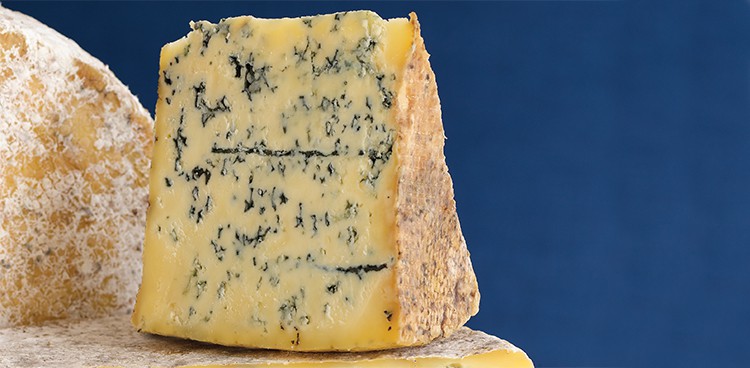
Blue cheese get’s some pretty passionate supporters and some pretty passionate haters, but I’d never heard of anyone who passionately studied blue cheese.
Evolutionary biologist Ricardo C. Rodríguez de la Vega, however, has made the mold on cheese his area of expertise.
“Every time we’re traveling internationally for a conference or something, we go specifically to the local cheese shop and say, ‘Give me the wildest blue cheese you have,’” Rodríguez de la Vega told The New York Times. And earlier this week, the scientist’s attention to wild blue cheese led to a pretty shocking discovery.
Dr. Rodríguez de la Vega has been conducting a study that revolves around a strand of mold called penicillium. Two kinds of this strand are commonly used in cheesemaking: Penicillium roqueforti, which is combined with fermenting curds to form blue cheese, and Penicillium camemberti, which—once sprayed on the curds—constructs a protective layer (a.k.a. the rind) around our favorite soft cheeses. These types of mold help keep the cheese safe from harmful strands of fungi and bacteria.
Since the strain of mold determines rather it will protect or destroy the cheese, the scientific identification of various mold species in the early twentieth century was extremely beneficial to cheesemakers. They were then able to choose the laboratory-born mold that best fit their cheeses. What they didn’t know, however, was that the mold would respond the way all species aim to: going into survival-of-the-fittest mode and adapting to their environment. Which, in this case, meant swapping DNA with other species of mold.
Dr. Rodríguez de la Vega and his colleagues performed their study by gathering 10 species of penicillium. Six species are found on milk; the other four have no connection to cheese. In studying their genetic makeup, the scientists found pieces of DNA that didn’t seem to match the rest of the genetic structure. “These pieces of DNA weren’t present in the closest relatives of each mold species, but they were found in identical form in distantly related species,” NYT’s Carl Zimmer reports. With this swap, known as horizontal gene transfer, the mold can more easily survive on milk, but it loses the ability to grow how they would in the wild. Each mold the scientists researched had five percent of their genome made of DNA from another species.
These changes have taken place in “such a short time scale in evolution that it’s quite amazing,” says evolutionary biologist and co-author of the study Antoine Branca.
While this discovery can help cheesemakers further perfect mold use in their production, Tatiana Giraud, another study co-author, says it’s important to understand the potential dangers. The mold that spoils cheese can take on the enhanced genes of the safety mold and become more resistant, adding another layer to the country’s ongoing debate about the validity and safety of GMOs.



